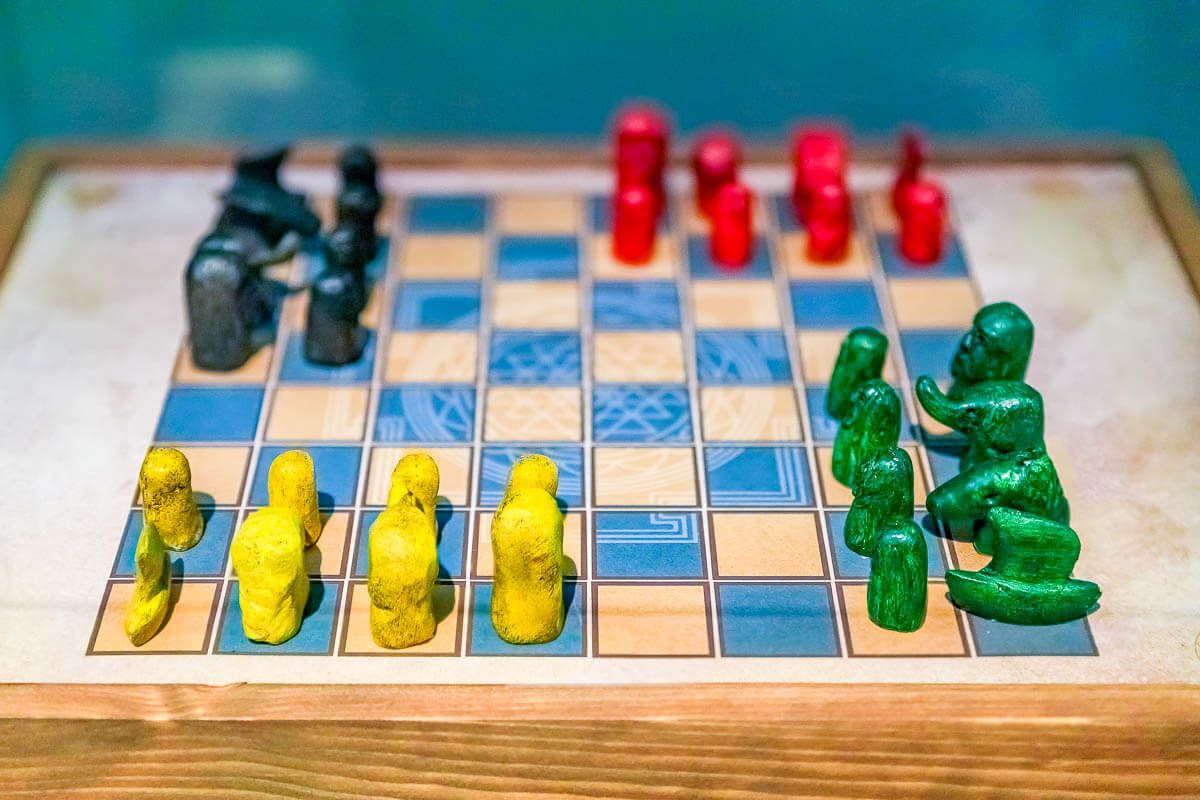

It’s sometimes said that soccer is the world’s game, but if there’s any activity that offers something close to universal appeal, it’s probably chess, with a reported 600 million-plus regular adult participants. Given the minimal space and physical exertion needed, it’s easy to see why, although chess can definitely count as a mental workout. While most of us would fail at executing an acrobatic scissor kick, it’s somewhat easier (at least physically) to learn to strategically move chess pieces to opportune spots while slowly reducing an opponent to a quivering mess. Read on to learn six fun facts about the ultimate battle board game, but be sure to keep a watchful eye on your king.
Chess Evolved From the Indian Board Game Chaturanga

Although the exact rules of the sixth-century Indian board game chaturanga are lost to time, enough is known to label it a clear forerunner to chess. Like its more recent relative, chaturanga was a simulated war game that involved moving pieces of differing attacking capabilities, with the end goal of capturing the opponent's king-like piece. Chaturanga was eventually adapted into shatranj (or chatrang) by Persian players, and this was the version of the game that spread across Europe. With the introduction of a few key changes, including the transformation of a somewhat punchless king's minister into the mighty queen, the modern form of chess was born in the 15th century.
Benjamin Franklin Helped Popularize Chess in the U.S.

A man of immense intellectual capacity, Benjamin Franklin was unsurprisingly drawn to the challenges that arose from the chessboard. He wrote of playing as far back as 1733, and later was often seen competing in public venues during his time as minister to France in the 1770s and '80s. His treatise "The Morals of Chess," which surfaced in 1779, is considered the first published work on the subject by an American author. Although he was perhaps admired more for his enthusiasm than pure talent, Franklin's endorsement of the game boosted its popularity in his home country, and eventually led to his induction into the U.S. Chess Hall of Fame in 1999.
Many Chess Champions Have Come From Russia

After Austria's Wilhelm Steinitz won the first official World Chess Championship in 1886, the top ranks of international chess became increasingly dominated by Russian-born competitors. Along with delivering the game's first female champion in Vera Menchik, the talent pool from this area of the world produced a series of men's champions of almost exclusively Soviet/Russian nationality during the second half of the 20th century. The one player to break through the Eastern Bloc was American Bobby Fischer, who defeated Boris Spassky for the championship in 1972, although he was later stripped of the title in 1975 for refusing to follow federation rules.
There Are More Possible Chess Moves Than Atoms in the Observable Universe

This is the sort of tidbit that pops up on internet searches without much of an explanation, but it’s valid if you follow the logic proposed by mathematician Claude Shannon, sometimes called the "father of information theory." According to his 1950 paper "Programming a Computer for Playing Chess," there are approximately 1,000 unique possibilities for each coupled pair of white-then-black moves, which adds up to 10 to the power of 120 possible moves — aka the "Shannon Number" — for a game lasting 40 turns. As there are an estimated 10 to the power of 80 atoms in the observable universe, that would be checkmate for the Shannon Number in this comparison of incomprehensibly enormous figures.
The 1997 Deep Blue-Kasparov Match Marked a Turning Point for Computer Chess

While Shannon and fellow geniuses like Alan Turing were fixated on chess-playing computers as far back as the 1950s, the landmark moment in this field arrived in May 1997, when the IBM supercomputer Deep Blue defeated world champion Garry Kasparov in a six-game match. Although the humbled champ suspected that human intervention was involved because of an unusual sacrifice offered by his opponent — later explained as a bug in the software — the rapid development of computing power soon obliterated any hope of humans retaining the edge over machines. Writing of his experience playing computers in 2010, Kasparov casually mentioned that anyone could buy a "home PC program that will crush most grandmasters." In fact, it’s now been at least 15 years since a human beat a computer in a chess tournament.
The World’s Biggest Chess Set Can Be Found in Norway
While some programmers are devoted to creating ever smarter and faster chess engines, other fans of the game remain fixated on size. As such, there are several claims to the title of world's largest chess board, although the winner, as of 2023, appears to be the 11.5-by-11.5-meter MegaChess set in Stavanger, Norway. A similar battle plays out for the distinction of largest chess piece: The World Chess Hall of Fame advertises ownership of the reigning champ, a 20-foot king, on its Missouri campus, while publicly ignoring the 20-foot, 6-inch king unveiled by a French chess club in 2022.
